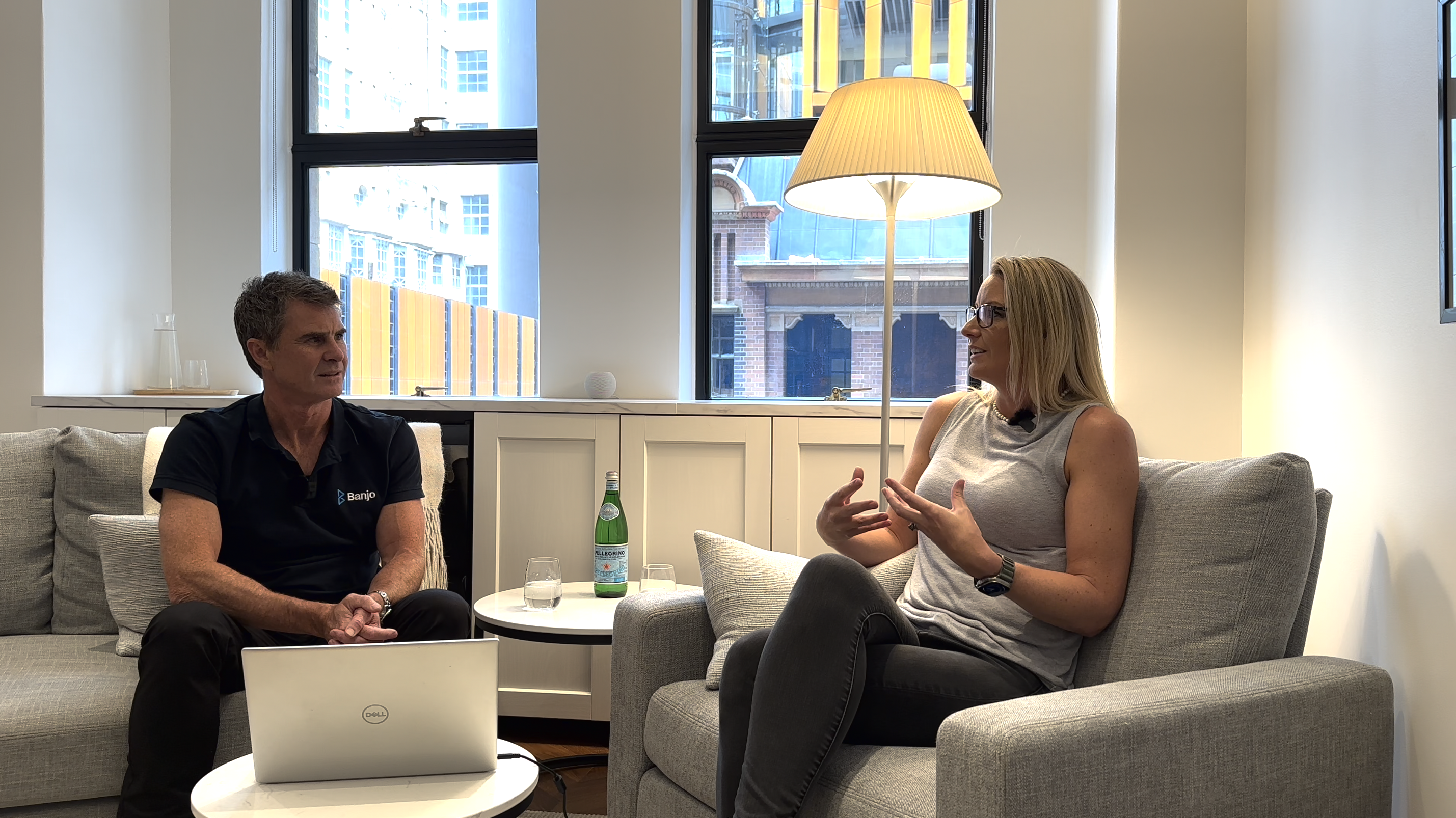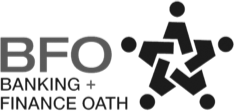Guy Callaghan, CEO of Banjo Loans speaks with Strategic Psychotherapist Bronwyn Penhaligon of Penhaligon Applied Psychology about how anxiety can affect us all in the workplace, and how to manage it.

Basis of anxiety
“Anxiety is a broad term that manifests differently for different people,” Bronwyn explained.
Much of this is driven by our brain’s limbic system (the ‘reptilian’ part of our brain) that served us well in caveman days. Sabre toothed tigers are extinct, but we still react in that primitive way to real or perceived threats. Our brains are wired to keep us safe and stop us from getting into danger. Negative thoughts are five times as strong as neutral or positive thoughts.
Much of this is driven by our brain’s limbic system (the ‘reptilian’ part of our brain) that served us well in caveman days. Sabre toothed tigers are extinct, but we still react in that primitive way to real or perceived threats. Our brains are wired to keep us safe and stop us from getting into danger. Negative thoughts are five times as strong as neutral or positive thoughts.
How anxiety presents
While anxiety is a psychological phenomenon, it often presents physically in a wide range of ways from rigid shoulders to nausea, to headaches.
Bronwyn described the anxiety brain as being like the home smoke alarm that doesn’t differentiate whether you’ve burnt the toast, or the house is on fire. It goes on to full alert at the slightest provocation.
For example, say you get an email from your manager requesting a meeting next Wednesday, for 10 mins. You have no idea what the meeting is about, and the brevity of it is a bit strange. So, you start imagining you’re going to be fired. Your mind begins ‘catastrophising’ from there. It turns out the meeting was about handing over a proposal that she wants you to review. It’s all good.
“The key thing to remember is because you’re actively thinking this way, you can also stop doing it. We’ve got way more control over ourselves than we think we do,” says Bronwyn.
Bronwyn described the anxiety brain as being like the home smoke alarm that doesn’t differentiate whether you’ve burnt the toast, or the house is on fire. It goes on to full alert at the slightest provocation.
For example, say you get an email from your manager requesting a meeting next Wednesday, for 10 mins. You have no idea what the meeting is about, and the brevity of it is a bit strange. So, you start imagining you’re going to be fired. Your mind begins ‘catastrophising’ from there. It turns out the meeting was about handing over a proposal that she wants you to review. It’s all good.
“The key thing to remember is because you’re actively thinking this way, you can also stop doing it. We’ve got way more control over ourselves than we think we do,” says Bronwyn.
How to reframe anxiety
Remember that thoughts are just that: thoughts. They’re not facts.
The second important point is, it’s not about what happens to you, it’s how you choose to respond to it.
Bronwyn explained that often in high performing people and business owners, there’s a lot of ‘input’ from multiple sources. “They run a lot of over-responsibility, perhaps trying to control lots of staff and tending to micro-manage, or feeling stressed about things they have no control over.”
“Make sure your mental windscreen is in sharper focus than your rearview mirror. Concentrate on where you’re going, not where you’ve been.”
Guy agreed. “Regardless of the position you hold in the business, it’s like a relay race. You run your part as fast as you can, and when you pass the baton, it’s up to that person to do their part. You need to trust the process, even though it’s scary.”
Guy explained “As a former Olympic swimmer, I worked with a sports psychologist, who helped me to focus on being in the here and now, instead of ‘could’ve, would’ve, should’ve..’ One simple technique he taught me was to wear a rubber band on my wrist. Every time I thought about what I should have done in the past, I flicked the rubber band and gave myself a sting.”
According to Bronwyn, people often finish one challenging piece of work, and move straight on to the next one. Stop for a second, recognise what you achieved, and celebrate.
The second important point is, it’s not about what happens to you, it’s how you choose to respond to it.
Bronwyn explained that often in high performing people and business owners, there’s a lot of ‘input’ from multiple sources. “They run a lot of over-responsibility, perhaps trying to control lots of staff and tending to micro-manage, or feeling stressed about things they have no control over.”
“Make sure your mental windscreen is in sharper focus than your rearview mirror. Concentrate on where you’re going, not where you’ve been.”
Guy agreed. “Regardless of the position you hold in the business, it’s like a relay race. You run your part as fast as you can, and when you pass the baton, it’s up to that person to do their part. You need to trust the process, even though it’s scary.”
Guy explained “As a former Olympic swimmer, I worked with a sports psychologist, who helped me to focus on being in the here and now, instead of ‘could’ve, would’ve, should’ve..’ One simple technique he taught me was to wear a rubber band on my wrist. Every time I thought about what I should have done in the past, I flicked the rubber band and gave myself a sting.”
According to Bronwyn, people often finish one challenging piece of work, and move straight on to the next one. Stop for a second, recognise what you achieved, and celebrate.
Qs and As
How do I know if my anxiety or stress is becoming an issue?
Are there techniques to get away from that anxious feeling in the moment?
- Anxiety responds well to action. Switch it up, change your location - get up, go outside go for a walk.
- If that’s not available, do something else to change your energy. Put on some music that you love, really let yourself rip, sing loud and offkey. The music you like is flooded with dopamine.
- Pause what you’re doing and take a couple of slow, deep breaths, from your belly.
How can you hold space for somone that is anxious?
- What you see in your clients, colleagues or staff is only the tip of the iceberg. Below the water is what’s really going on for them. If you think someone isn’t OK, check in with them. Create an opportunity for them to talk freely. If they want to rage or get upset, that’s OK but it takes skill to sit with it. Ask them, “do you need a solution from me just now, or do you want me to simply listen?”
What kind of treatments are available for anxiety if you don’t want medication.
- From a treatment perspective, find a professional who is solution focused, goal-oriented, rather than talking about your past traumas, etc. Work with someone who’s in the strategic, or cognitive behavioural therapy space.
Tips and tools to navigate anxiety.
- Meditate. Guided meditation (e.g. an app on your phone) can help.
- Acknowledge you’re feeling anxious about something. It takes away some of that noise in your head.
- At the end of every day, think of 3 things that went really well, and then get curious about why they went well. Instead of “this is/was difficult or hard” say “look what I did!” Zero in on the fact that you’re in control of your life and are effective.
** When you do the DASS test, it asks for your email, don’t worry that you’ll be added to a marketing list – you won’t.
You can watch the webinar On-Demand here


